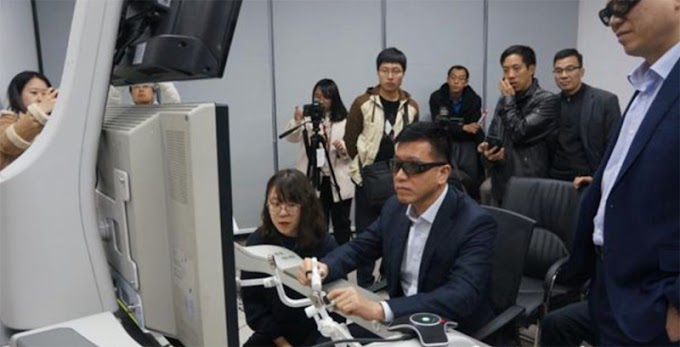With
the development of Virtual reality (VR) games, educational classes, it has been
an essential task to design a display technology that can be attached with head.
Also, they are able to provide the user with a seamless VR experience. The device should be capable of showing images
just in front of the eyes. Such a display is also used in a fighter jet pilot’s
helmet to track enemy aircraft. These displays are called head-up displays and
are based on the projection of light. Tech relevant technology is called the virtual
retinal display (VRD). Now let’s see how it works?
Virtual Retinal Display (VRD) Explained!
VRD projects images over the retina
without blocking the natural vision of the user. This means the user can see
natural images through the glass and the display is able to project other useful
information on top of that. The user sees what appears to be a conventional
display floating in space in front of them.
It is based on a light projection
technology just like a table projector that we use for educational, research,
& corporate presentations. The technology uses ultra-low power LASER or LED
as a source of light. LASER is a very coherent source of light, the word coherent
means a single color of light. The light source is then modulated to scan the entire
display area just like a display raster used in old days CRT monitors.
The optical projection technology projects
the scanned lights on any specially modified glass or on the retina directly. The
scanner system is the heart of the technology, which can be created mechanically,
electrically, or both. In the mechanical system, the LASER light is brought to the
system via optical fiber, then light is launched from the fiber to small micromirrors. The mirrors are connected with an oscillating platform, which can be
controlled by an electronic control circuit. In this way, the scanning mechanism
happens in one direction only. To perform the scanning direction in the
perpendicular axis, one rotating arrangement is done by the use of ultra-small servo
motors, which can move in a certain angle. Thus, the whole projection area is scanned.
Sometimes, a Light intensity
modulation technique is used to produce different levels of brightness. As the
light source is a LASER, the color vibrancy and resolution are excellent for a
VRD device. The low power LASER allows the device to be very energy efficient
as compared to other display technology. The whole arrangement is controlled
by an electronic board.
To have a better-understanding watch this video in our youtube channel:
Other facilities of VRD:
VRD devices let a user see
through the glass and projects artificially created images on top of that. That
is very useful for smart glass applications, for example ‘Google glass’. The
user is not dependent here on any other camera module to see the ambient
environment unlike the normal LCD based bi-panel VR headset.
As it uses low power LASER light, the
system consumes much lower power as compared to other technologies. In fact, many
medical imaging instruments use this technology. Patients with low vision can
be corrected by the use of VRD.
VRD finds its application n various fields
like radiology, communication, surgery, aerospace, military, etc.
It has been observed that as
compared to LCD based bi-panel VR headset, VDR based HMD are handy and consumes
low power, which means other modules like GPS, sensors can be installed quite
easily.
One disadvantage of this kind of
device is that the whole arrangement must be fixed and must not be altered
while operating. If anyone of the components gets damaged, individually can not
be changed. But the same is not true for LCD based bi-panel VR. There the LCD panel
can be changed when needed.
Conclusion:
VRD type HMD are very flexible and lightweight;
thus, they are comfortable. Low power LASER makes the viewing experience much superior
to other display technologies. It provides better resolution, color shades,
and brightness levels. All these things make VRD devices ideal for a head-mounted display.







0 Comments
All non-spamy comments will be visible